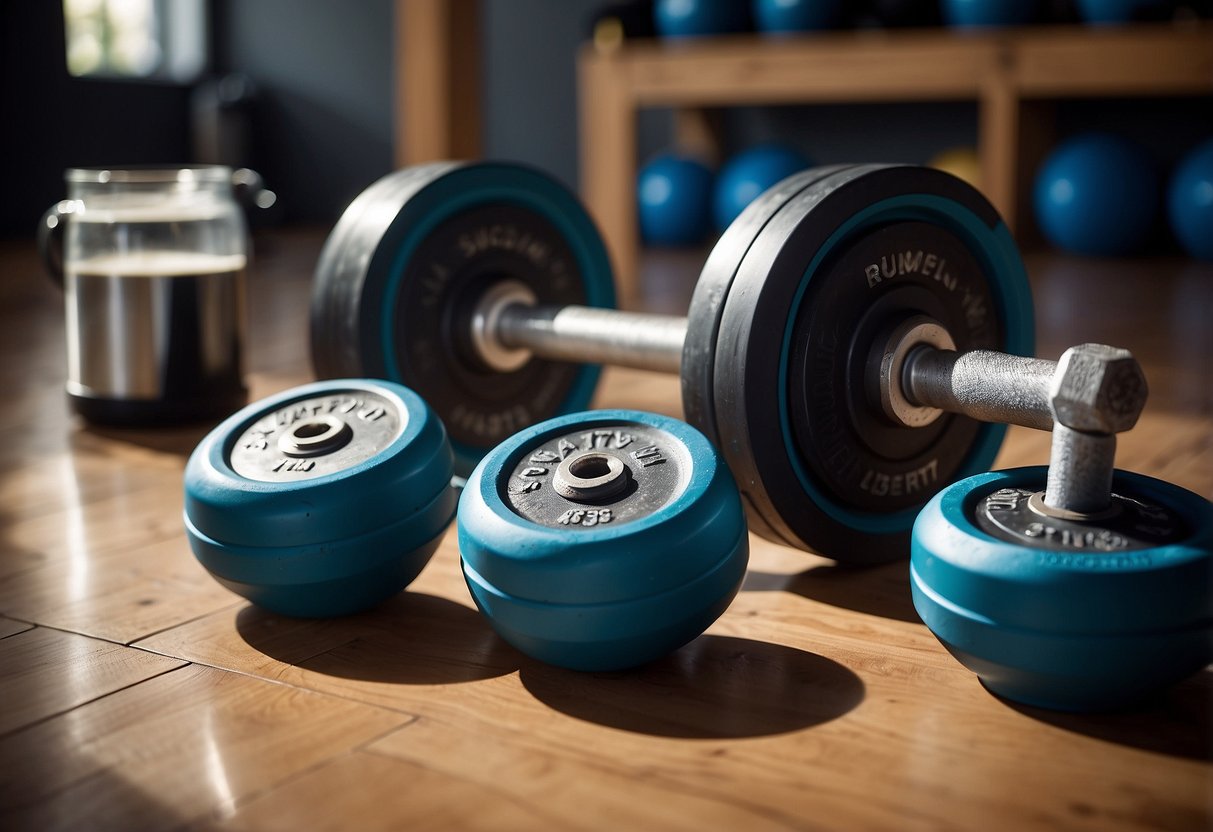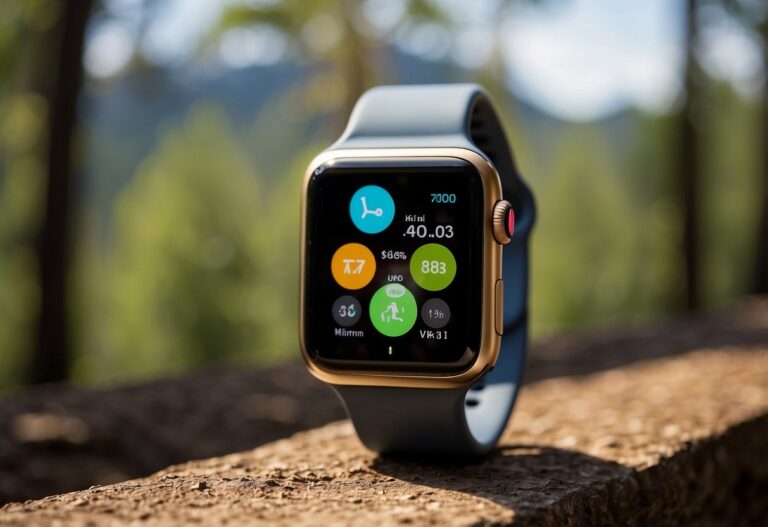Trying to gain weight might seem challenging, but with the right workout tips, you can achieve your goals efficiently. Weight gain isn’t just about eating more; it’s about building muscle and strength through targeted exercises. Understanding how to balance your workout routine with your diet is key to successful weight gain.

Focusing on workouts that build muscle mass will help you see results faster. Whether you’re new to the gym or looking to refine your routine, combining proper technique with consistent practice will set you on the right path. Investing time in learning which exercises are most effective can make a significant difference in your progress.
Consume High-Calorie Proteins
When you’re trying to gain weight, it’s important to focus on high-calorie proteins. These help build muscle and provide energy. Consider integrating eggs into your diet. They are easy to cook, versatile, and packed with protein.
Nuts and seeds are another great option. A handful of almonds or sunflower seeds can add significant calories and protein to your day.
Red meat, like beef and lamb, is rich in calories and protein. It can be a hearty addition to your meals.
Don’t forget about dairy products. Full-fat milk, cheese, and yoghurt are not only delicious but also high in protein and calories.
Try protein shakes or weight-gainer drinks as well. These can provide a big calorie boost in a convenient form.
Finally, fish like salmon and mackerel are packed with healthy fats and proteins. They’re excellent for high-calorie meals.
Include Healthy Fats
Including healthy fats is key to gaining weight the right way. Fats are packed with calories, which can help you reach your goals faster.
Avocados are a great choice. They are creamy and can be added to salads, sandwiches, or even smoothies.
Another option is nuts and seeds. They are high in calories and provide important nutrients. Snack on almonds, walnuts, or sunflower seeds.
Don’t forget about oils like olive oil. Drizzle it over your meals for an extra calorie boost. It’s especially good on salads or when cooking veggies.
Consider adding nut butters to your diet. Spread almond or peanut butter on toast or mix it into oatmeal. It’s delicious and calorie-dense.
Incorporating these healthy fats can make gaining weight easier and more nutritious. Think about how you can add them to your meals today.
Eat More Carbohydrates
Eating more carbohydrates is essential if you’re trying to put on weight and build muscle. Carbs provide your body with the energy needed for intense workouts and daily activities.
Start by adding carb-rich foods like rice, pasta, and oats to your meals. These foods are not only filling but also help sustain your energy levels throughout the day.
You might also enjoy foods like potatoes and sweet potatoes. They’re versatile and can be prepared in many delicious ways.
High-carb snacks such as fruits and whole grain toast can be great between meals. They help keep your energy up and add to your calorie intake.
Try having a protein shake with added carbs like banana or oats. It’s a quick and easy way to get extra carbs and proteins.
Carbohydrates are your friends when aiming for weight gain. They fuel your workouts and ensure you have the energy to push harder.
Drink Smoothies and Shakes
Drinking high-calorie smoothies and shakes can help you gain weight efficiently. They are an easy way to pack in nutrients and calories.
Consider a Banana Peanut Butter Weight Gain Smoothie. This tasty drink has around 459 calories and 40 grams of protein. It’s a great option for a post-workout treat and can replace a meal if needed.
You might also enjoy a Chocolate Peanut Butter Banana Smoothie. Loaded with chocolate, peanut butter, banana, and whole milk, this smoothie can be enhanced with protein powder for extra creaminess and calories.
For a variety, try the Peanut Butter Avocado Smoothie. This blend includes Medjool dates, avocado, and cocoa powder, providing a delicious mix of healthy fats and calories. The chocolate flavour is an added bonus!
Increase Meal Frequency
Eating more often can be a game-changer for weight gain. If you have a fast metabolism, eating bigger meals can feel overwhelming. Instead, try having smaller, more frequent meals throughout the day.
By having 5-6 meals a day, you give your body more opportunities to take in calories. This way, you avoid feeling too full but still manage to meet your calorie goals.
Also, more frequent meals can help maintain your energy levels. This is especially important if you’re working out regularly.
Incorporate snacks between your main meals. Think protein shakes, nuts, or yoghurt to boost your caloric intake without much effort.
Do Resistance Training
To gain weight, resistance training is essential. It helps build muscle through exercises that challenge your muscles with weights or resistance bands. As your muscles grow, so does your weight.
When starting out, focus on compound exercises like squats and deadlifts. These work multiple muscle groups at once, making your training more efficient.
Remember to gradually increase the weight you lift. This is called progressive overload and ensures your muscles keep growing.
Incorporate exercises targeting all muscle groups. Don’t forget your smaller muscles like biceps and calves. This leads to balanced growth and strength.
Consider using free weights such as dumbbells and barbells for versatile training. Machines are helpful too, especially for beginners.
Track Your Caloric Intake
To gain weight effectively, you need to keep track of your calorie intake. Start by using a calorie tracking app; they’re easy to use and can be quite accurate.
Think about using a notebook if you prefer pen and paper. Write down everything you eat, and be sure to check the calorie content of each food item.
Always aim to meet or slightly exceed your calorie goals. For instance, if you need 2500 calories a day, try to consume around 2700 calories. Smartphone apps can make this process simpler and more efficient.
Monitoring your food portions is also important. Use measuring cups or a kitchen scale to ensure you’re getting the right amount. By doing this consistently, you’ll make sure you’re hitting your daily calorie target to achieve your weight gain goals.
Making small adjustments in your calorie intake when necessary can prevent issues like unwanted fat gain. Aim for a balanced diet with a bit more carbs and protein to support muscle growth and healthy weight gain.
Use Weight-Gainer Supplements
Weight-gainer supplements can be a handy tool when looking to gain weight. These supplements pack a lot of calories into a small serving, making it easier to meet your daily intake goals.
One popular option is a weight gain shake. These shakes often contain a mix of protein, carbohydrates, and fats. For instance, a shake with whole milk, protein powder, peanut butter, and a banana can be a tasty and effective way to add extra calories.
By incorporating these supplements into your routine, you can ensure you’re getting enough nutrients to support muscle growth and weight gain.
Eat More Red Meat
Adding red meat to your diet can help you gain weight and build muscle. A good example is an eight-ounce strip steak, which packs 52 grams of protein and only 265 calories. This provides a great protein-to-calorie ratio.
Red meat is also rich in essential nutrients like niacin (vitamin B3), which helps expand blood vessels and increase good cholesterol. Both of these factors can improve your overall performance during workouts.
Beef is slightly higher in calories compared to other meat sources, making it an effective choice if you’re looking to increase your calorie intake for muscle growth.
Incorporate Nut Butters

Adding nut butters to your diet can be a great way to gain weight. They are high in calories and packed with nutrients. For example, almond butter has more fibre than peanut butter, making it a healthier option for your digestive system.
You can spread nut butters on toast, mix them into smoothies, or enjoy them with fruit. Not only do they taste great, but they also provide a quick way to increase your calorie intake.
Have you tried using sunflower seed butter? It’s a fantastic choice if you’re allergic to nuts and provides the same protein and nutrients as other nut butters.
Nutrition for Weight Gain
To effectively gain weight, it’s important to focus on several key aspects of nutrition. These include consuming more calories than you burn, maintaining a balanced intake of macronutrients, and ensuring you get enough protein to support muscle growth.
Caloric Surplus
Eating in a caloric surplus means you need to consume more calories than your body burns in a day. This is essential for gaining weight. To figure out how many calories you need, start by calculating your Basal Metabolic Rate (BMR), which is the number of calories your body needs at rest. Then, add the calories burned through physical activities.
Example:
- If your BMR is 1,800 calories
- And your daily activities burn around 600 calories
- You would need at least 2,400 calories daily to maintain your weight
To gain weight, aim to eat 500-700 calories more than this maintenance amount. This can be achieved by adding calorie-dense foods like nuts, dried fruit, and avocados into your diet. For instance, avocados contain 161 calories per half.
Macronutrient Balance
Besides just eating more, focus on the balance of macronutrients. This means paying attention to your intake of carbohydrates, proteins, and fats. A typical macronutrient split for weight gain might look like this:
- Carbohydrates: 50-60%
- Proteins: 20-30%
- Fats: 20-30%
Incorporate complex carbs like brown rice and whole grains. Brown rice, for example, is a great source of sustained energy. Healthy fats are equally important; options like olive oil and nuts can be easily added to meals. For instance, adding a tablespoon of olive oil to your dishes can add 120 calories and beneficial fats.
Importance of Protein
Protein is crucial for muscle growth and repair. Aim for a daily protein intake of at least 1.5-2 grams per kilogram of your body weight. This protein should come from a variety of sources such as lean meats, dairy products, and plant-based proteins.
Meals:
- Breakfast: 3-4 eggs, two slices of whole-wheat toast with nut butter, a bowl of fruit, and a glass of milk (from Bodybuilding.com)
- Lunch: Grilled chicken breast, broccoli, and a cup or more of brown rice
- Snacks: Nuts and protein bars, which are easy to carry and consume
By ensuring you’re getting enough protein, you support muscle development which, coupled with a proper workout routine, helps in weight gain. Protein shakes can also be a convenient way to boost your intake, especially if you’re on the go.
Effective Workout Strategies
To gain weight effectively through workouts, it’s essential to focus on progressive overload, compound exercises, and ensuring proper recovery and rest. These strategies help build muscle mass and improve strength, leading to your weight gain goals.
Progressive Overload
Progressive overload means gradually increasing the stress on your muscles to encourage growth and strength. You might start with lighter weights and fewer repetitions.
Over time, you should increase the weight, repetitions, or intensity of your workouts. For instance, if you can comfortably perform 3 sets of 10 reps with a particular weight, consider adding more weight or increasing the reps to keep challenging your muscles.
Tracking your progress in a journal or app can also help. This way, you can see where you need to push harder to keep making gains. It’s your roadmap to success, ensuring that you’re always improving and not stuck at a plateau.
Compound Exercises
Compound exercises target more than one muscle group at a time, making them highly effective for building mass. Examples include squats, deadlifts, bench presses, and rows. These movements help maximise muscle engagement and stimulate significant growth.
Squats: Engages your quads, hamstrings, glutes, and core. Aim for proper form to avoid injury and maximise benefits.
Deadlifts: Great for your back, hamstrings, and glutes. Start with weights that you can handle and progressively increase.
Bench Presses: Focuses on your chest, shoulders, and triceps. Gradual increases in weight will help build upper body strength.
Combining these exercises into your routine can accelerate your progress significantly. They not only build muscle but also improve your overall strength and fitness.
Recovery and Rest
Adequate rest and recovery are crucial for muscle growth. Your muscles need time to repair and grow stronger after being stressed during workouts.
Ensure that you have at least one rest day between heavy workout sessions. This doesn’t mean you can’t be active; light activities like walking or stretching can be beneficial.
Sleep is another critical component. Aim for 7-9 hours per night to allow your body to rejuvenate. Without proper rest, your muscles won’t repair effectively, and your workout gains will be limited.
On rest days, consider activities that promote relaxation and recovery, such as yoga or light swimming. This helps maintain an active lifestyle without overworking your muscles. Prioritising recovery can make a big difference in your strength and muscle gains.







